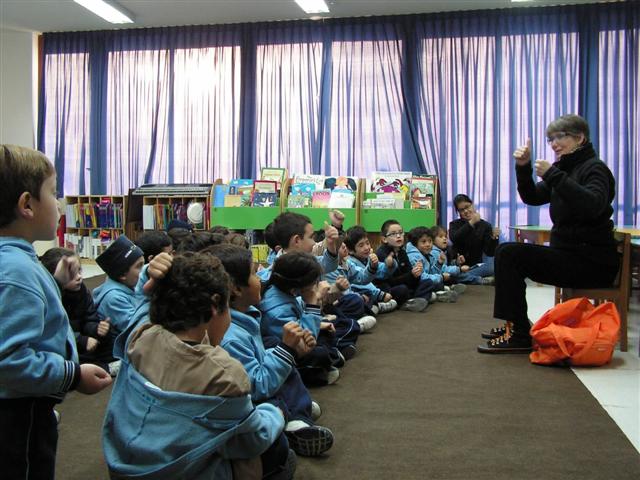Five steps for successful school assemblies
/
A few years ago, I wrote about how to hire a storyteller. This one is for performers as well as for principals, librarians, teachers, PTA/PTO members—anybody who books performers. (In the arts world, these are called "presenters," but that confuses people, so I'm using "bookers.") These suggestions come from my 25+ years as a working storyteller.
Notice that the steps on the list apply to life as well!
1. Connect and communicate. Essential!
Performers: Answer e-mails and phone messages promptly, be clear about what you do (and what you don't do—don't promise what you don't enjoy), ask about audience size, venue and special circumstances, explain rates and other fees, sign and send contracts in a timely manner and be available for follow-up questions.
Bookers: Answer e-mails and phone messages promptly, be clear about what you want, give information about the audience size, venue and special circumstances, sign and send contracts in a timely manner and be available for follow-up questions.
2. Be prepared. Not just for Scouts.
Performers: Tell the booker about any pre- or post-performance materials you have available, know how long it takes to get to the venue and allow extra time, arrive early, know your material inside and out.
Bookers: Make sure the teachers and other staff know about the performance and schedule, provide pre-performance materials or links, make sure the venue is set up appropriately, contact the performer in the week before the assembly.
3. Be flexible and be kind. Things happen: road construction, bad weather, electrical outages. If need be, go back to step one.
Performers: Remember that school staff work very long days. Bring what you need, including sound system, if possible. If the room isn't set up as you wish, work together to try to make it right. If there's something you need, ask politely. Respect time limits, school resources and audience needs.
Bookers: Realize that the performer has visited many, many schools, and has good reasons for the set-up requests. Know that the performer may never have traveled to your site before. Show the performer where the restroom is and offer water. If there's a long gap between performances, let the performer rest in the staff room.
4. Expect the best. Good will and good expectations go a long way toward an excellent show.
Performers: As storyteller Carol Birch says, "The best people want you to succeed, and your audience is made up of the best people." Before I begin a show, I silently bless the audience. It should go without saying that you should be excellent at your craft (go back to step 2 if you're unsure).
Bookers: You've chosen a wonderful event for your venue. As you introduce the performer, let the audience know this.
5. Enjoy the show! Assemblies should be fun as well as educational.
Performers: Love your work and let it show!
Bookers: Stay for the assembly if you can and be a good model for the listeners (including other grownups).
Have more suggestions? I'd love to hear your ideas! Use the comments section below. Want this in a .pdf? Send me an e-mail.
©Priscilla Howe 2013




























































































